
-
Vind de juiste voeding voor uw huisdierDoe de quiz en ontdek welke voeding het beste bij uw viervoeter past.Vind de juiste voeding voor uw huisdierDoe de quiz en ontdek welke voeding het beste bij uw viervoeter past.Gezondheids categorieAanbevolen producten
 Sensitive Stomach & Skin hondenvoer met Kip
Sensitive Stomach & Skin hondenvoer met KipHill's Science Plan Sensitive Stomach & Skin Adult Natvoer Hond met Kip is een compleet premium hondenvoer voor volwassen honden vanaf 1 jaar. Deze smaakvlolle paté uit blik is verrijkt met ingrediënten die de spijsvertering en de verzorging van de huid ondersteunen.
Shop Now Hypoallergenic Adult Natvoer
Hypoallergenic Adult NatvoerHill's Science Plan Hypoallergenic Adult Natvoer Hond met Zalm is een compleet premium dierenvoer voor alle volwassen honden vanaf 1 jaar. Deze smaakvolle paté uit blik is speciaal samengesteld voor honden met een gevoelige huid en maag. Het bevat één nieuwe dierlijke eiwitbron en is graanvrij.
Shop Now Sensitive Stomach & Skin Small & Mini Adult hondenvoer met Kalkoen
Sensitive Stomach & Skin Small & Mini Adult hondenvoer met KalkoenHill's Science Plan Sensitive Stomach and Skin Small & Mini Adult Natvoer Hond met Kalkoen is een compleet premium dierenvoer voor volwassen honden van een klein ras van 1 tot 6 jaar oud. Deze heerlijke zachte mousse is verrijkt met ingrediënten die de spijsvertering en de verzorging van de huid ondersteunen.
Shop NowGezondheids categorieAanbevolen producten Senior Vitality Mature Adult Natvoer Kat Kip & met Zalm
Senior Vitality Mature Adult Natvoer Kat Kip & met ZalmMalse brokjes met kip in saus voor oudere katten, ter ondersteuning van de veroudering, vitaliteit en hersenfunctie. Met licht verteerbare ingrediënten van hoge kwaliteit en vitamine E en omega 6-vetzuren voor een glanzende vacht.
Shop Now Healthy Cuisine Sterilised Cat Adult Stoofpotje voor Katten met Kip & toegevoegde Groenten, met Zalm & toegevoegde Groenten
Healthy Cuisine Sterilised Cat Adult Stoofpotje voor Katten met Kip & toegevoegde Groenten, met Zalm & toegevoegde GroentenHill's Science Plan Healthy Cuisine Stoofpotjes zijn 100% gebalanceerd en gezond, samengesteld met een onweerstaanbare smaak waar katten dol op zijn.
Shop Now Mature Adult Natvoer Kat met Zeevis
Mature Adult Natvoer Kat met ZeevisMalse brokjes in saus voor oudere katten. Met licht verteerbare ingrediënten, eiwitten van hoge kwaliteit om spiermassa te behouden en antioxidanten vitamine C + E voor een optimale gezondheid.
Shop Now -
Hond
- Hondentips & artikelen
-
Hond gezondheids categorie
- Gewicht
- Voedsel- & milieugevoeligheden
- Urinewegen
- Spijsvertering
- Gewrichten
- Nieren
- Herstellende zorg
- Mondverzorging
-
Hond levensstadium
- Puppyvoeding
- Volwassen voeding
- Senior voeding
Kat- Kattentips & artikelen
-
Kat gezondheids categorie
- Gewicht
- Huid- & voedselgevoeligheden
- Urinewegen
- Spijsvertering
- Nieren
- Haarbal & perfecte vacht
- Herstellende zorg
- Mondverzorging
- Stress
-
Kat levensstadium
- Kittenvoeding
- Volwassen voeding
- Senior voeding
Uitgelichte artikelen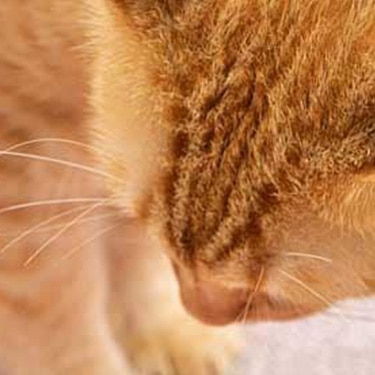 Urinekristallen en -stenen bij honden en katten
Urinekristallen en -stenen bij honden en kattenLees over de oorzaken en behandelingen van urinekristallen bij honden en katten, om je huisdier gezond te houden. Bezoek Hill's voor deskundig advies over verzorging van de urinewegen.
Read More Virtual Vet Visits: What You Need to Know
Virtual Vet Visits: What You Need to KnowLearn the ins and outs of a televet appointment before you talk to a vet online.
Read More Realistische goede voornemens voor jou en je huisdier | Hill's Pet
Realistische goede voornemens voor jou en je huisdier | Hill's PetAan het einde van het jaar maken veel mensen goede voornemens voor het nieuwe jaar: ze willen bepaalde gewoonten aanleren (of afleren) om het jaar gezond en gelukkig te beginnen.
Read More -

 Wetenschappelijk onderbouwde voeding creëert verschillen die u kunt vertrouwen.
Wetenschappelijk onderbouwde voeding creëert verschillen die u kunt vertrouwen.


In your cat's world, nothing is off limits: inside boxes, underneath beds, on top of your keyboard. It's all fair game to a cat that wants to play, rest, hide, or is just plain curious. That cat privilege extends—in their mind—to your worktops, the upper reaches of a bookshelf, and even the top of the fridge. After all, cat jumping skills are top-notch.
Cats can easily exceed altitudes six times their height. A study in the Journal of Experimental Biology reports that cats are superior jumpers because of the limb length and muscle mass of their back legs. Cats start a jump in a very deep crouch, then lift their front legs before "an explosive extension" of their back legs.
While there is no argument that a cat's jumping ability is impressive, it can also be annoying (and dangerous, as Blue Cross notes that, contrary to the popular myth, cats don't always land on their feet) to have cats regularly leaping to spots in your home that you would prefer to be cat-free zones.
How can pet parents keep cats off furniture, shelves, worktops, and anywhere else in the home that are off-limits?
Clean off Shelves
Cats are naturally curious. A pen, a set of keys, or a fragile knick-knack can catch their attention and tempt them to jump up and explore this "toy" that has been left for them to find. By keeping shelves clear of clutter, you can also lessen your cat's interest in exploring places you don't want them to go. This can also be beneficial to you as cats are known for knocking things off shelves, and unfortunately they aren't good at handling a dustpan and brush to clean up the mess after themselves.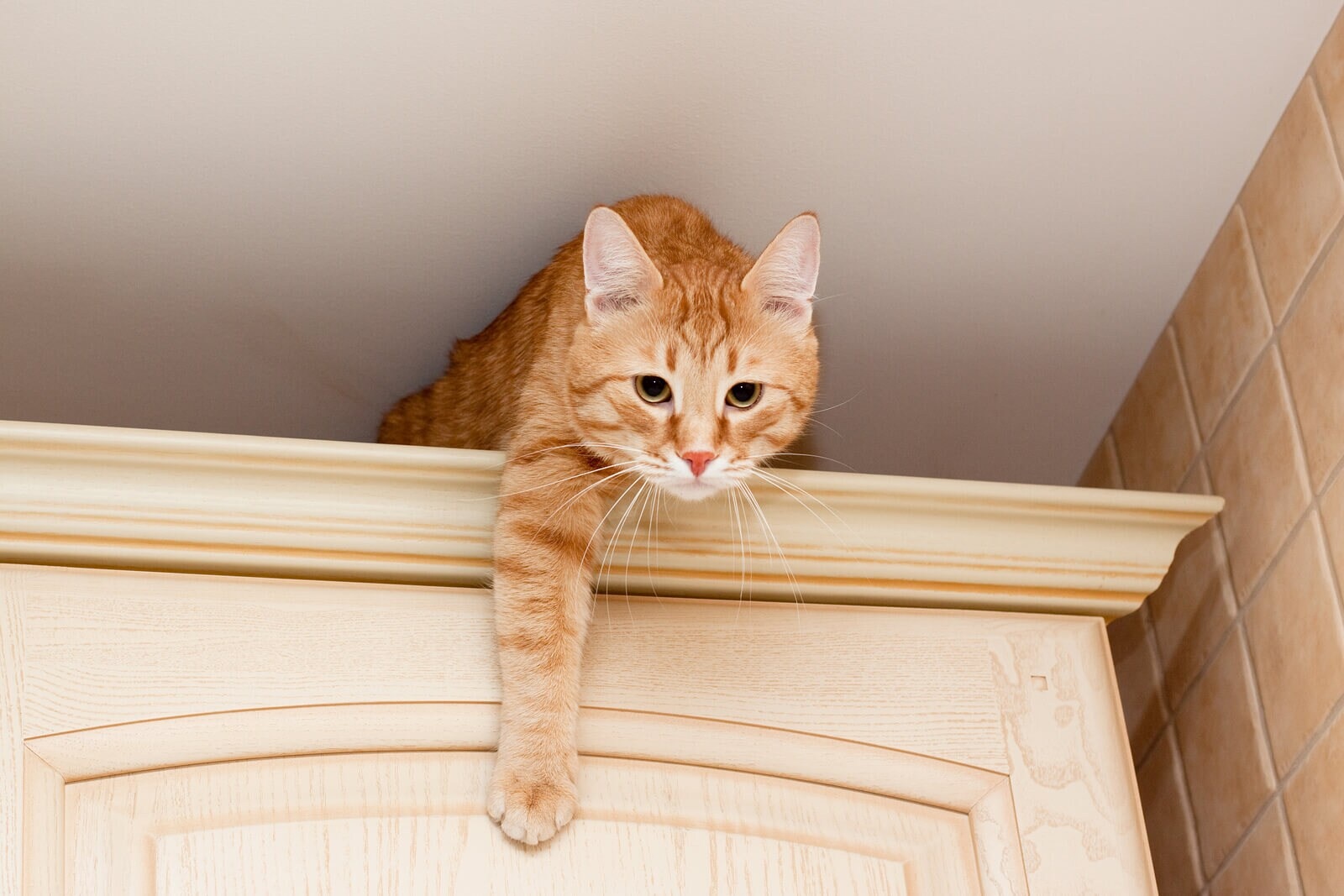


Smakelijke tips
Kittens hebben in hun eerste jaar mogelijk meerdere vaccinatiebezoeken nodig. Volwassen katten hebben doorgaans baat bij een jaarlijkse controle, terwijl oudere katten of katten met speciale behoeften mogelijk vaker op controle moeten.
Keep Food off Kitchen Worktops
A cat's sense of smell is much better than yours, so if they smell something tasty, they are likely to jump up and try to sneak a nibble. That can be dangerous for them, depending on what the food is. By keeping surfaces clear of food and crumbs, you'll remove the possibility of your cat getting a reward from leaping onto your kitchen worktops. If you find that your cat is intensely curious about what you're making for dinner—and won't stay off the worktops while you're preparing it—simply shut your cat in another room until the kitchen is clean.
Shut the Blinds
Cats like to jump onto windowsills to take in the outdoor view. If there's a windowsill that you don't want your cat to use, simply shut the blinds to take away the TV. But make sure you give your cat at least one spot to look outside, as cats enjoy watching the world go by.
Give Them an Alternative
A cat tower gives your furry friend a place to jump, exercise, and explore. Keep it interesting for them by rotating the toys, and give them boxes to hide in and crumpled pieces of paper to bat around. Be imaginative! Cat trees are also an excellent way to let your cats jump and climb to their heart’s desire. Make sure that the one you choose is sturdy and won’t wobble or topple if your cat engages in some energetic acrobatics. It's important to note that you shouldn't completely eliminate your cat's ability to jump. It's an innate behaviour inherited from their lives as wild cats, where they would climb trees to escape predators and stalk their prey from high above before pouncing. Providing an approved place for exercise and jumping will also help keep your cat off of other high areas where they might not be welcomed.
Use Double-Sided Tape
Cats hate the feel of double-sided tape on their paws, so it can be a good deterrent for a cat who continues to jump to a place you don't want them to go.
Understand Their Jumping Behaviour
It's true that jumping is coded in your cat's DNA. They’re hardwired to enjoy being up high where they’re safe, but it’s also good as the parent to understand the need to be hidden away from everyone. If you notice your cat jumping up high more frequently or shying away in hard-to-reach areas like cabinets, it might be because they’re stressed or not feeling their best. While cats are predators, their small size also makes them prey, and cats that are sick or injured will mask signs of illness or even hide themselves away to keep out of reach of predators. They might also be trying to get away from some other sort of danger if they feel afraid. It's helpful to understand what they might be fearful of so that you can manage the environment and make it feel safer for them to engage in their normal behaviour again.
Cats are natural jumpers so you shouldn't discourage the behaviour altogether. But with a little training, you can teach your cat where not to leap.


Kara Murphy is een freelance schrijfster en huisdiereigenaar die in Erie, Pennsylvania woont. Ze heeft een goldendoodle genaamd Maddie.
Gerelateerde producten

Malse brokjes met kip in saus voor oudere katten, ter ondersteuning van de veroudering, vitaliteit en hersenfunctie. Met licht verteerbare ingrediënten van hoge kwaliteit en vitamine E en omega 6-vetzuren voor een glanzende vacht.

Hill's Science Plan Healthy Cuisine Stoofpotjes zijn 100% gebalanceerd en gezond, samengesteld met een onweerstaanbare smaak waar katten dol op zijn.

Hill's Science Plan Healthy Cuisine Stoofpotjes zijn 100% gebalanceerd en gezond, samengesteld met een onweerstaanbare smaak waar katten dol op zijn.

Malse brokjes in saus voor oudere katten. Met licht verteerbare ingrediënten, eiwitten van hoge kwaliteit om spiermassa te behouden en antioxidanten vitamine C + E voor een optimale gezondheid.
Gerelateerde artikelen
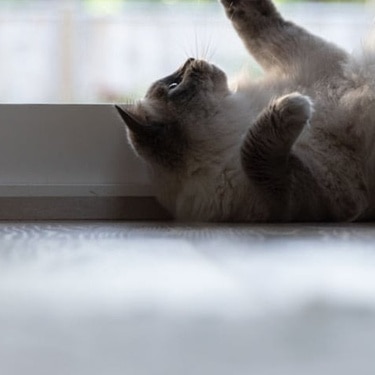
Je kat voeren is een prachtige kans om een band op te bouwen. Ontdek hoe je dit het beste doet en creëer een gezonde routine met Hill's.
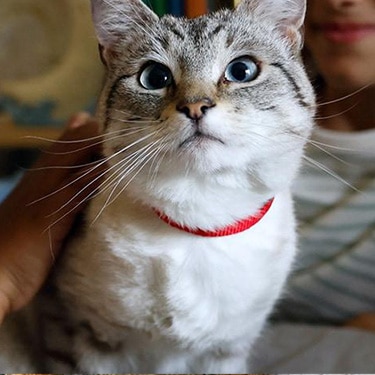
Ontdek wat je kunt doen om een gevoelige maag bij een kat te ontdekken en te verhelpen. Zie welke gewoontes en voer je kunt toepassen om je kat gelukkig en gezond te houden.
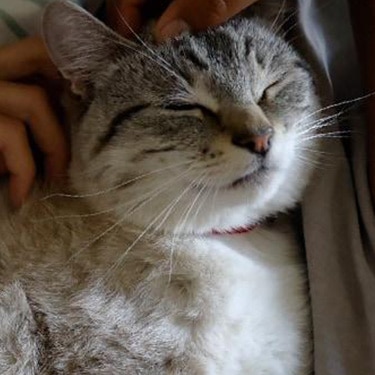
Leer meer over hoe je de spijsvertering van je kat kunt ondersteunen om de algemene gezondheid te verbeteren. Het eetpatroon is essentieel voor een lang en gelukkig leven van je kat, dus ontdek wat je kunt doen.

Good nutrition is about the right balance of nutrients. Learn more about health issues when feeding a cat food that has an improper nutritional balance from your friends at Hills Pet Nutrition.

Zet uw kat op dieet zonder dat hij het weet
Onze caloriearme formule helpt je het gewicht van je kat onder controle te houden. Het zit boordevol hoogwaardige eiwitten voor de opbouw van soepele spieren en is gemaakt met doelgerichte ingrediënten voor een smakelijke, voedzame maaltijd. Klinisch bewezen antioxidanten, vitamine C+E, dragen bij aan een gezond immuunsysteem.
Zet uw kat op dieet zonder dat hij het weet
Onze caloriearme formule helpt je het gewicht van je kat onder controle te houden. Het zit boordevol hoogwaardige eiwitten voor de opbouw van soepele spieren en is gemaakt met doelgerichte ingrediënten voor een smakelijke, voedzame maaltijd. Klinisch bewezen antioxidanten, vitamine C+E, dragen bij aan een gezond immuunsysteem.